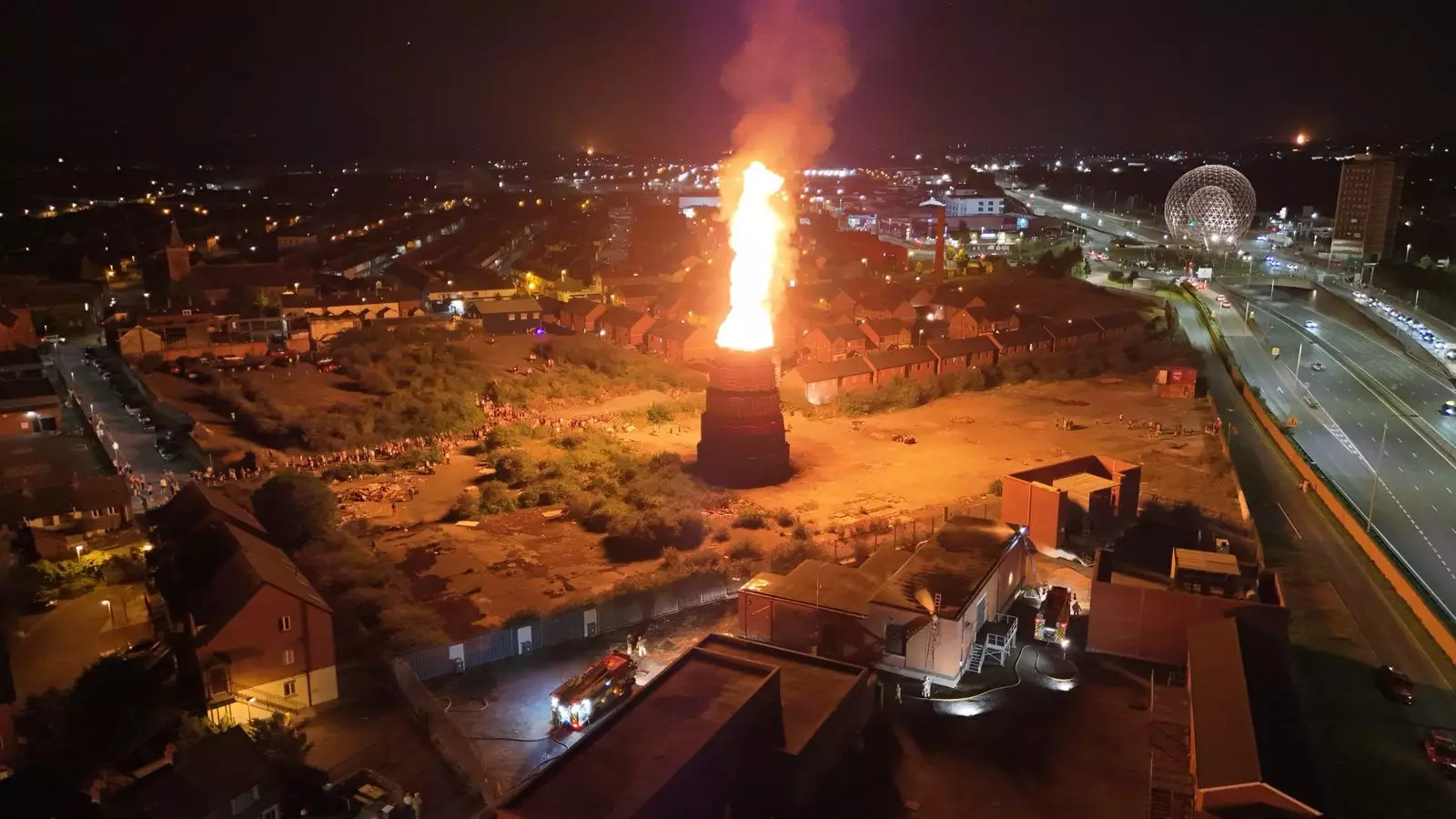The annual bonfire celebrations in Northern Ireland once exemplified a vibrant expression of cultural identity, rooted deeply in historical narratives that shaped the region’s complex identity. Yet, in recent years, these festivities have devolved into something far more contentious and dangerous than mere tradition. The recent “Eleventh Night” saw a surge of bonfires—around 300—igniting across multiple communities, often regardless of safety advisories and regulatory warnings. While many participants argue that these displays are an essential part of their cultural heritage, the ripple effects reveal a darker side: reckless disregard for public safety, health, and social cohesion.
The recent incident involving a bonfire built atop asbestos highlights how these celebrations can transcend cultural expression and become outright environmental and health hazards. Situations where authorities warn against the risks, yet celebrations proceed—regardless of the hazards—are emblematic of a troubling attitude: valuing tradition over the collective good. Bonfires designed as acts of pride increasingly threaten to overshadow their cultural significance with acts of irresponsible behavior and disregard for the consequences. Such actions chip away at the social trust necessary for meaningful community cohesion and escalate tensions, especially when safety or environmental concerns are dismissed or ignored.
Safety Failures and Public Outrage
This year’s bonfire night was undeniably chaotic. Firefighters faced an overwhelming demand, attending nearly 200 incidents during a peak window between 10 pm and 1 am, with emergency calls soaring by over 150% compared to previous years. This surge underscores what many critics have been pointing out for years: these events are not harmless traditions but active catalysts of disorder and danger. In situations where dozens of emergency interventions are needed, the true cost of these celebrations becomes all too apparent. The strain on emergency services not only reveals a lack of regard for public safety but also diverts vital resources from genuine emergencies.
Perhaps the most alarming aspect of this year’s event was the incident involving a bonfire built on a site contaminated with asbestos near critical infrastructure such as hospitals and power stations. Despite repeated warnings from environmental agencies and political leaders, the bonfire was lit, culminating in a loud public outcry and official condemnation. The decision to proceed with such a reckless act demonstrates a disturbing attitude: some community members or organizers may prioritize symbolism over safety, with little regard for the potential health risks and environmental damage. The subsequent environmental crime investigation and the pledge to assess lessons learned point to systemic failures that require overhaul if these problematic traditions are to be kept or reformed.
The Political and Social Implications of Controversial Symbols
Beyond safety issues, bonfire night continues to be a battleground for deeper societal tensions, often manifesting in provocative imagery and messages. The burning of effigies—such as those depicting political figures, migrants, or groups like Kneecap—serves as a stark reminder of how symbols of the past and present are weaponized to communicate division, resentment, and hostility. While some may see these acts as expressions of cultural identity or political protest, they often deepen divides, incite antagonism, and undermine efforts toward reconciliation.
In particular, the burning of an effigy depicting migrants, alongside provocative messages, sparks concern about rising xenophobia and intolerance. Such acts are not isolated; they are symptomatic of a broader societal struggle to reconcile diverse communities or move beyond historical grievances. The intersection of cultural pride with overt hostility reveals a fragile political landscape where history is weaponized, often at the expense of social harmony and mutual understanding.
Concerted efforts are desperately needed to reframe how these traditions are practiced. The community’s challenge is to preserve cultural identity while embracing responsibility—an approach that fosters unity rather than division. Enabling dialogue, encouraging respectful expressions of cultural heritage, and holding organizers accountable for safety and environmental concerns would mark meaningful progress. The persistent use of violence, provocative imagery, and unsafe practices only underscores the necessity for a shift—one that dismantles the cycle of reckless displays and moves toward a more mature, inclusive celebration of culture.
Bonfire night, with its combustible mix of tradition, politics, and community identity, holds the potential for both unity and division. Yet, as evidenced by recent incidents, it often falls into the latter, driven by a culture that sometimes celebrates bravado more than safety, heritage more than responsibility. Only through critical introspection, community engagement, and robust regulation can this event evolve into a celebration that respects safety, environmental health, and social harmony. Failing to do so risks perpetuating a cycle of chaos—where safety concerns are dismissed, environmental crises are ignored, and societal divisions deepen under the guise of cultural pride.

